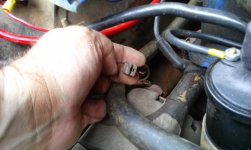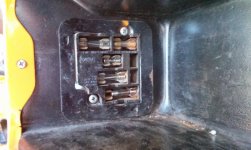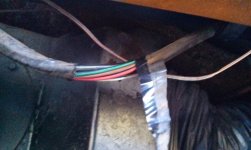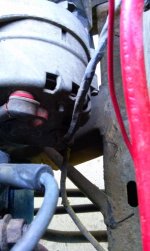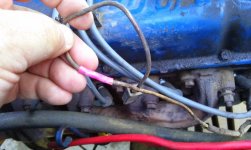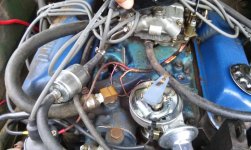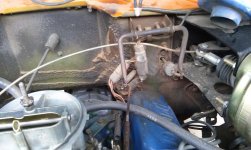Killer Frogs
Jr. Member
I have a 73 Bronco, it was built in October of 72 so it has some 72 tendencies. Electrical problem began when the radio would cut in and out. Radio is a Kenwood wired to the stock wire. Would cut out for 2-5 minutes than come back.
The other problem it was having was the hi-beams would stay on when the headlight knob was pulled. I replaced the dash light switch and the floor dimmer switch and this did not make a difference. When I would pull the switch one click, normally the parking lights, the hi-beams would come on. Pulling it all the way out was the same result. When I hit the floor switch, the lights would go on and off very quickly. Then the problem went away as if it was never a problem, but it created a new problem, battery drain.
So now when I turn off the Bronco it drains the battery. The battery can hold a charge for about 6 hours, but overnight it would be dead. I have been removing the negative terminal to save the charge. I had a mechanic solve a different engine problem and he did a little looking at the electrical problem and said the drain/short was coming from the black fused wire that goes from the starter solenoid to the dash, see pic.
I traced the wire into the dash all the way to the speedometer, see pic, and there is current going from the black wire at the solenoid to the wire at the dash. At the speedometer it has a plug in the wire. Not sure if it is needed, but there is a yellow wire near the speedometer that is not connected to anything, see pic.
Not sure if it relevant but I have the high torque mini starter from the Graveyard, so it has two wires coming off the starter to the solenoid. The PO has one wire that looks like it was on the alternator that is not connected along with one wire that is not on the solenoid, pictured. It has worked fine without these wires. The engine is not original, it is from a 68 Falcon.
Any ideas on my problem? What does the black wire from the solenoid go to? Thanks for the help, I know this is a lot of detail, but I think it is relevant. I'm at a loss and I appreciate any help.
The other problem it was having was the hi-beams would stay on when the headlight knob was pulled. I replaced the dash light switch and the floor dimmer switch and this did not make a difference. When I would pull the switch one click, normally the parking lights, the hi-beams would come on. Pulling it all the way out was the same result. When I hit the floor switch, the lights would go on and off very quickly. Then the problem went away as if it was never a problem, but it created a new problem, battery drain.
So now when I turn off the Bronco it drains the battery. The battery can hold a charge for about 6 hours, but overnight it would be dead. I have been removing the negative terminal to save the charge. I had a mechanic solve a different engine problem and he did a little looking at the electrical problem and said the drain/short was coming from the black fused wire that goes from the starter solenoid to the dash, see pic.
I traced the wire into the dash all the way to the speedometer, see pic, and there is current going from the black wire at the solenoid to the wire at the dash. At the speedometer it has a plug in the wire. Not sure if it is needed, but there is a yellow wire near the speedometer that is not connected to anything, see pic.
Not sure if it relevant but I have the high torque mini starter from the Graveyard, so it has two wires coming off the starter to the solenoid. The PO has one wire that looks like it was on the alternator that is not connected along with one wire that is not on the solenoid, pictured. It has worked fine without these wires. The engine is not original, it is from a 68 Falcon.
Any ideas on my problem? What does the black wire from the solenoid go to? Thanks for the help, I know this is a lot of detail, but I think it is relevant. I'm at a loss and I appreciate any help.













